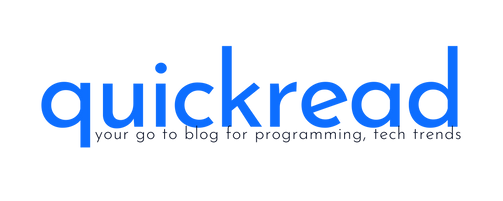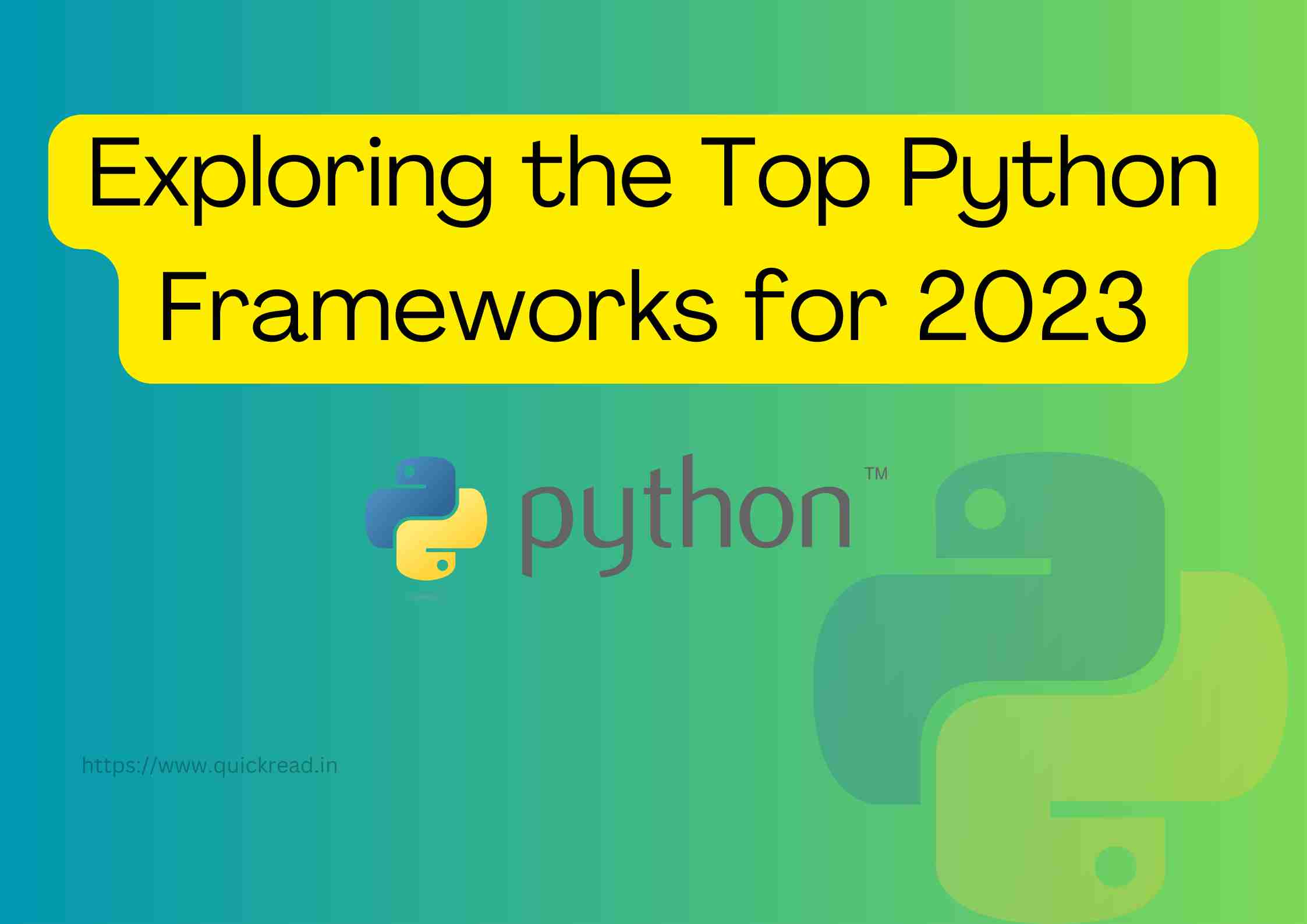Introduction
Python remains one of the most popular and versatile programming languages, powering everything from AI to web apps. As we enter 2023, Python offers developers an expanding toolkit of powerful frameworks for building robust apps. But with so many options, which frameworks are worth focusing on?
In this guide, we’ll survey the leading Python frameworks across categories to focus on for 2023 based on capabilities, trends and community energy.
The Rising Prominence of Python
Python’s rise shows no signs of slowing. Here’s why Python will continue gaining adoption in 2023:
- Productive to code in – With simple syntax, rich libraries and dynamic typing, Python boosts developer productivity. Less time spent on boilerplate.
- General purpose – Python applies to a wide range of domains from data science to DevOps. One language meets diverse needs.
- Supports modern paradigms – Python scales from structured to flexible code, encapsulation to microservices. Adapts to evolving programming approaches.
- Abundant libraries and frameworks – For nearly any task, Python offers battle-tested libraries so you don’t reinvent the wheel.
- Platform versatility – Python code can run on servers, desktops, cloud platforms and devices. This portability is powerful.
- Vibrant community – Python enjoys one of the largest and most supportive developer communities, creating a rich ecosystem.
For these reasons, Python will continue gaining traction among novice and experienced developers alike in 2023.
Leading Web Python Frameworks
For building responsive web apps and APIs, Python offers excellent frameworks both full-stack and micro.
Django
Website: Django
The most popular Python web framework, Django provides a robust, scalable and secure foundation for web and mobile apps. Key features:
- Batteries included – Django comes with common tools like ORM, templating, authentication built-in.
- MVC patterns – Clean separation of concerns following model-view-controller architecture.
- Code generation – Automatic admin site, models and APIs minimize repetitive code.
- Easy prototyping – Fast to mockup ideas and iterate. Well suited for Agile development.
- Enterprise-ready – Battle-tested reliability and security for large-scale applications.
Django is mature but continues to evolve with additions like support for async views. It strikes a nice balance between flexibility and sane defaults.
Flask
As a microframework, Flask provides a lightweight and minimalist web solution. Key aspects:
- Barebones core – Only includes a routing engine out of the box. Remains unopinionated.
- Add what you need – Highly customizable via extensions for ORM, form validation, authentication and more.
- Flexibility – Great for both simple and complex apps. Add capabilities as required.
- Lean and fast – Small codebase, low overhead. Quickly return responses.
- Loose coupling – Components stay independent allowing changing parts as needed.
For small apps or large app glue code, Flask offers speed and flexibility. Extensions provide missing batteries.
FastAPI
Built on Pydantic, FastAPI is a more recent framework optimized for high performance. Features:
- Blazing fast – Leverages Starlette and Pydantic to squeeze max performance.
- Asynchronous – Makes best use of asynchronous Python capabilities.
- Intuitive – Effortless resource routing and request parameter handling.
- Type enforcement – Pydantic’s data parsing and validation prevents bugs.
- Automatic API docs – OpenAPI schema generated directly from code.
FastAPI is perfect for squeezing speed from Python for REST APIs and web services. It enforces robust code while staying intuitive.
Top Data Science Libraries
For AI, ML and analytics, Python offers exceptional libraries to crunch data.
NumPy
The leader for numeric and scientific computing in Python. Capabilities:
- Multi-dimensional arrays and matrices
- Linear algebra, Fourier transforms and random number capabilities
- C, C++, FORTRAN interoperability
- Tools for integrating with TensorFlow, SciPy, Pandas
NumPy powers the Python data stack providing efficient arrays optimized for math operations.
Pandas
A versatile library for data manipulation and analysis. Features:
- Intuitive data structures like DataFrames and Series
- Capable of processing any data from CSV to SQL
- Clean data munging capabilities
- Integrates with matplotlib, NumPy, and SciPy
- Excels at preparing messy data for machine learning
Pandas turn Python into an analytics workhorse for shaping and making sense of data.
SciPy
A robust library for scientific and technical computing tasks:
- Algorithms for optimization, linear algebra, integration and more
- Statistical tests and distributions
- Signal and image processing routines
- Sparse and geometric data structures
- Interfaces with C, C++ and Fortran code
SciPy provides proven scientific algorithms optimized and battle-tested in Python.
TensorFlow
The heavyweight for production machine learning:
- Flexible architecture for deploying ML models
- Rich set of ML capabilities including computer vision and NLP
- Highly scalable using advanced techniques like distributed training
- Can deploy to diverse targets from server to browser to mobile
- Integrates closely with other TensorFlow ecosystem tools
TensorFlow enables building and running Python ML at scale.
Top Data Visualization Python Frameworks
Turning data into visual stories, Python also offers stellar visualization libraries.
Matplotlib
The grandfather of Python data visualization:
- Interface inspired by MATLAB perfect for plotting
- Supports a wide array of graphing: lines, scatters, histograms, error charts and more
- Highly customizable with control over every aspect
- Integrates well with NumPy, Pandas and other libraries
- Backed by decades of refinement and testing
For static plotting, matplotlib remains hard to beat.
Seaborn
A high-level matplotlib wrapper for beautiful statistical graphics:
- Beautiful default styles for common chart types
- Concise syntax for visualizing statistical data
- Handles matrices and multi-plots for complex relationships
- Integrates closely with pandas DataFrames
- Built-in themes and color palettes
Seaborn streamlines visual statistical analysis with great defaults.
Bokeh
Focused on building interactive visualizations:
- Targets the browser allowing elaborate interactive graphics
- Stylish defaults optimized for modern screens
- Flexible glyph system for mapping data to glyphs
- Event system to tie visual components to behaviors
- Good toolkit for assembling dashboards and apps
Bokeh excels at delivering visualizations with rich interactions.
Dash and Plotly
Dash wraps Plotly for building analytical web apps:
- Construct rich UIs combining Plotly graphs with controls
- Bind UI elements to Python callbacks using Flask under the hood
- Plotly visualizations rendered using D3.js
- Gets dashboards and tools online fast without frontend expertise
- Handles analytics and real-time data pipelines
Dash lets you quickly build production-level web tooling for data exploration.
Top Choices for Microservices
Microservices architecture is gaining steam for scaling complex applications. Python offers great support through:
Nameko
A framework designed from the ground up for microservices. Features:
- Lightweight – services use only what they need
- Event-driven – services communicate using events
- AMQP based – built on proven RabbitMQ messaging
- Async support – handleconcurrency and responses efficiently
- Clear documentation – makes it easy to get started
Nameko lowers friction to splitting apps into resilient message-driven services.
Top Picks for Machine Learning Python Frameworks
Python is well established for building and deploying machine learning systems.
Scikit-learn
The premiere library for machine learning with Python:
- Algorithms for classification, regression, clustering, preprocessing and more
- Consistent API across methods makes it easy to swap techniques
- Robust techniques suitable for production systems
- Excellent documentation and examples
- Tight integration with data science stack like NumPy and pandas
Scikit-learn provides a one-stop-shop for applying battle-tested ML techniques at scale.
Keras
Deep learning made simple. Key features:
- High-level abstractions simplify working with neural networks
- Supports CNNs, RNNs and other network architectures
- Runs training on CPU or GPU seamlessly
- Easy model assembly using Python constructs
- Made for quick experimentation and prototyping
- Can deploy models to production using TensorFlow
Keras accelerates deep learning research while remaining user-friendly.
PyTorch
A strong contender for state-of-the-art deep learning. Capabilities:
- Optimized for speed and versatility using dynamic graphs
- Excellent for custom neural network architectures
- Imperative style for expressive code and debugging
- Strong GPU acceleration support
- Integrates with Python data science stack
- Gaining momentum in research community
PyTorch strikes a balance between hackability and performance for DL.
TopChoices for Building CLI Tools
For developing command-line apps and dev tools, Python has excellent options:
Click
The leading option for command line interfaces. Benefits:
- Declarative syntax for defining commands and arguments
- Supports options, flags, validation and autocompletion
- Nesting subcommands and command groups
- Handling stdin, stdout and pipes
- Testing runner included
- Actively maintained and well documented
Click makes it enjoyable to build professional CLI tools.
Typer
A modern alternative built on top of FastAPI:
- Async out of the box
- Auto documentation
- Supports type annotations
- Validation from Pydantic
- Alternative to Click with FastAPI benefits
- Gaining traction as a newcomer
Typer combines the speed of FastAPI with intuitive CLIs.
Conclusion
This survey highlights the extensive variety of purpose-built Python frameworks that will continue driving development in 2023 across domains from web to machine learning.
With its versatility, vibrant ecosystem and focus on productivity, Python development will keep thriving. For any kind of project, there is likely to be an excellent Python framework tailored exactly to your needs.
The Python frameworks profiled here represent leading choices that are mature, well-supported and have momentum carrying into the new year. By picking from the most capable and active projects, you can build on solid foundations while staying on the cutting edge.
Python’s ecosystem keeps expanding. But These python frameworks provide a robust toolkit to take your Python app development to the next level as we step into an exciting 2023!


